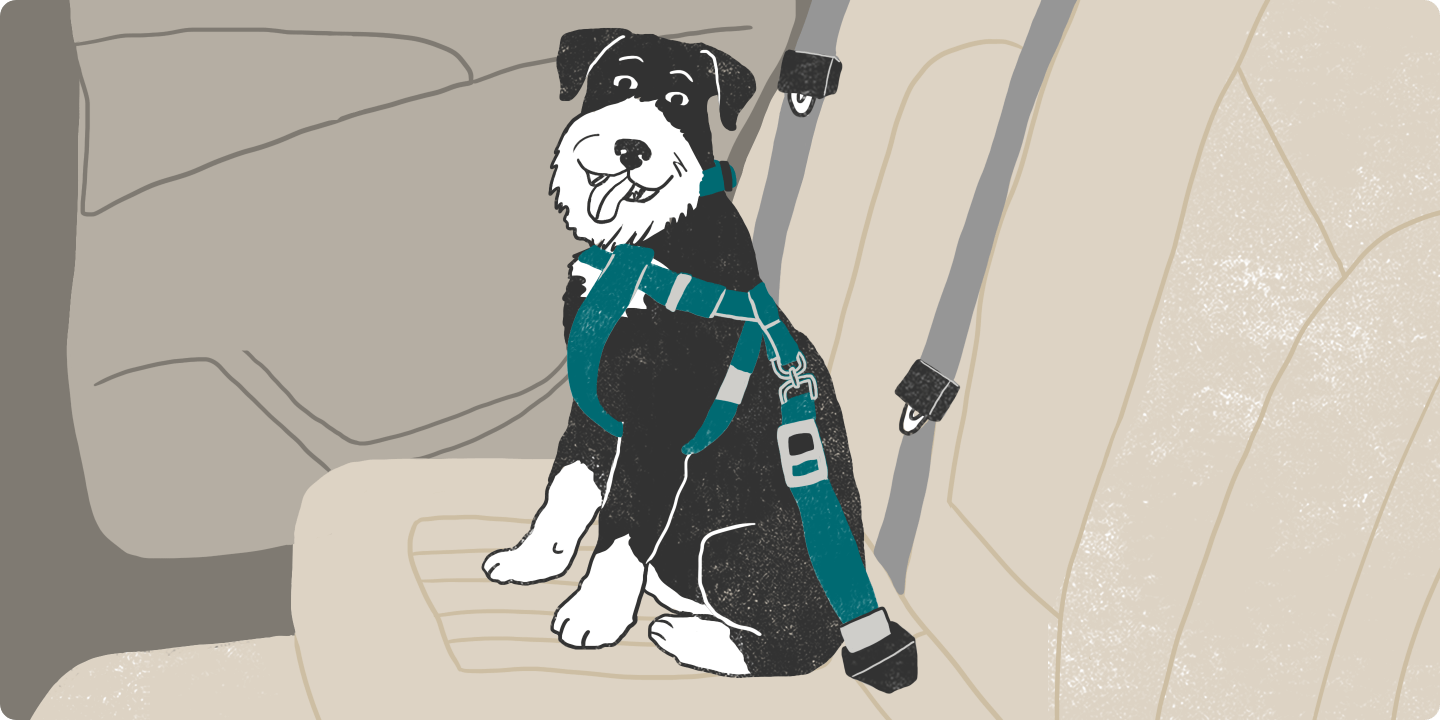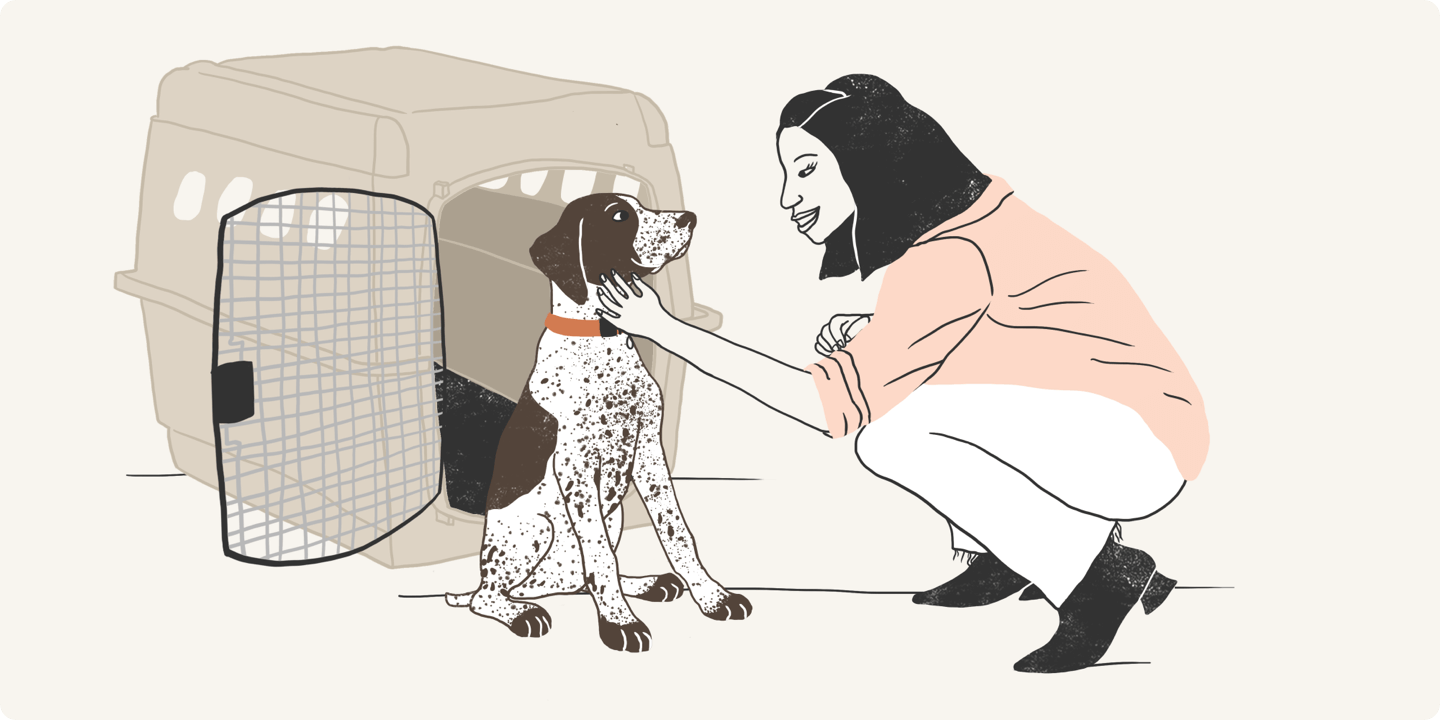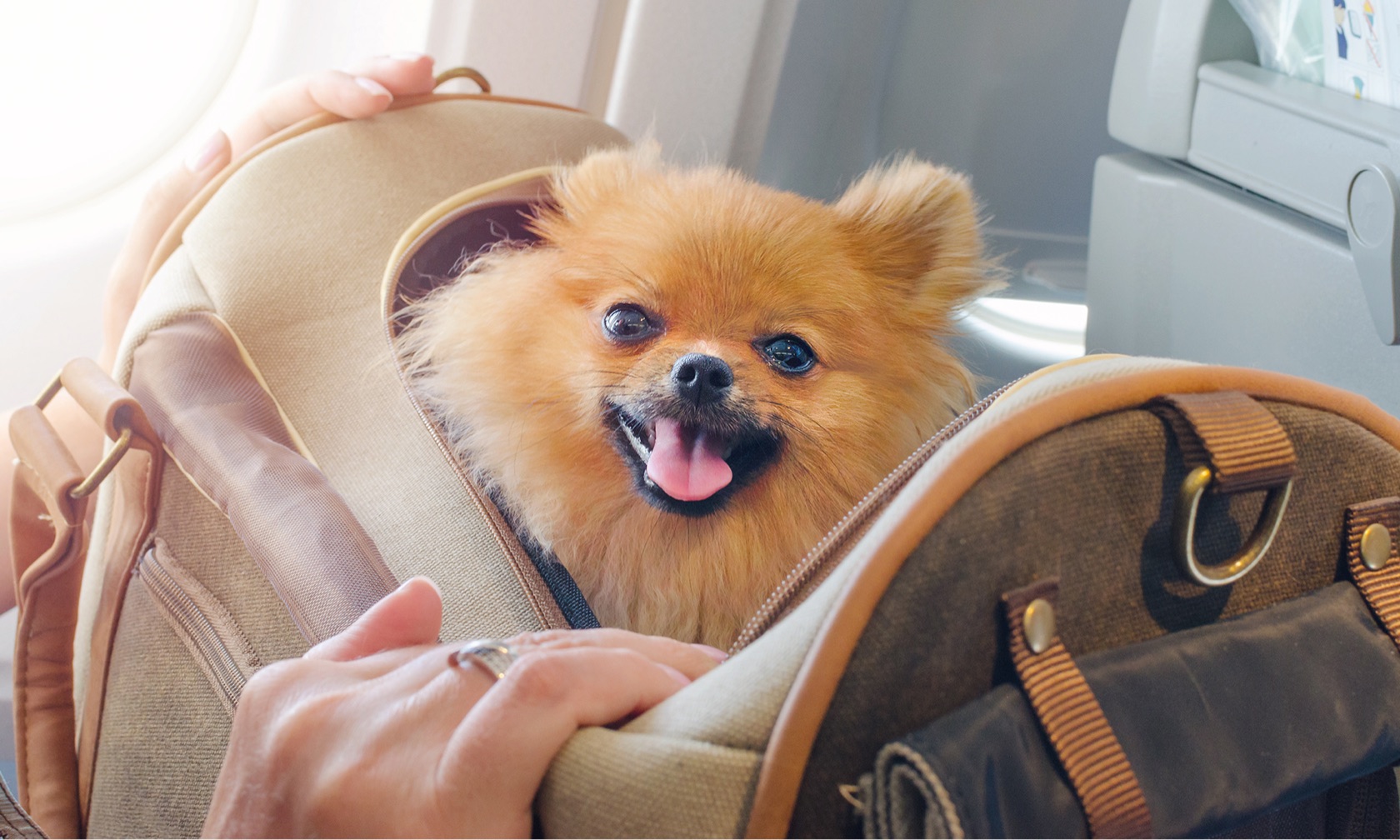The holiday season means lots of fun and festivities. It also often includes packing up the family for a road trip or plane ride. Thanksgiving and Christmas are popular times for holiday travel. In fact, during Christmas 5 out of 6 pet owners bring their dog along on holiday road trips1.
Many families want to include their dog or cat in their holiday plans, and luckily there are ways to make holiday travel safer and less stressful for you and your pets. If you’re thinking about bringing your dog or cat on your next trip, here are some helpful tips for traveling with pets.
Keeping their routine as normal as possible is important for limiting their stress.
- Allow Extra Time When Traveling With a Pet
Make sure to schedule extra time for travel, as your dog will need regular breaks to relieve themselves and stretch their legs. Cats don’t need these pit stops as much as dogs as long as you bring along a litter box for the car. - Try to Keep a Regular Routine
Whether during a long road trip or at a relative’s home, your dog will appreciate eating their meals and taking their usual walk at the same time. Cats are creatures of habit too, so keeping their routine as normal as possible is important for limiting their stress. - Pack for Your Pet
You’ll want to stock up on waste bags for your dog’s outdoor breaks. Have plenty of water bowls and water on hand, and pack extra of your pet’s food. Don’t forget their medications and supplements — make sure you have enough for the whole time you’ll be away. - Don’t Forget Their Papers
If you’re crossing state lines or traveling internationally, your pet may need a signed health certificate from your veterinarian. You’ll want to talk to your vet well in advance (at least 2 weeks) for your pet’s health certificate. - Update Your Pet’s ID Tags and Microchip
The last thing you want is for your pet to get lost while on holiday. But in case they do, having a collar with up-to-date contact information and making sure their microchip is registered and information updated will increase your chances of a fast reunion.

Traveling With Pets in the Car
A holiday road trip is easier than flying with a pet, but you’ll want to take the following precautions to ensure everyone enjoys the car ride.
Buckle up Your Pet
Traveling with your dog or cat in the car can create a big distraction for the driver and cause an accident. Unrestrained pets can be injured, or even injure other passengers in an accident. When traveling with dogs in the car, secure them with a quality seat belt and harness combo or with a crash-tested dog crate or carrier. A soft-sided crate with space for a litter box will make traveling with your cat in the car much easier.
Does Your Dog Get Car Sick?
They’re not alone! Nearly half of dog owners (48%) say their dog experiences motion sickness symptoms when traveling in a car2. Thankfully, there are medications that you can give your dog to help prevent vomiting due to motion sickness. Talk to your veterinarian to make sure you have some on hand before you travel. And take this quiz to see if your dog shows signs of car sickness so you’re ready to travel with your dog in the car.
Address Travel Anxiety Well in Advance
Many pets get anxious when traveling in the car. Speak with your veterinarian about what treatments are available for travel anxiety and work with a certified trainer to learn simple desensitization exercises that can help your pet feel better about getting in the car or their carrier.

Traveling With Pets on a Plane
Traveling with your cat or dog on a plane takes preparation. It’s important you’re aware of the availability and rules for pet air travel, which can be different depending on which airline you’re traveling with. Due to the stress of airline travel on pets, it’s recommended to avoid it if you can, especially if your dog needs to go in the cargo area. If you must fly with your pet, make sure to make arrangements well in advance, as there is a limit on the number of pets that can be in the cabin and even in the cargo hold.
Traveling With Cats on a Plane
Not all airlines allow cats to travel in the cabin of the plane, so it’s important to check with your airline. Also, note the carrier size measurements, so you can ensure their carrier fits under the seat. When going through the security checkpoint, you’ll need to carry your cat through, so it’s a good idea to have your cat on a harness and leash to keep them secure.
Traveling With Dogs on a Plane
If you have a dog that’s too large for in-cabin travel, consider whether you want them to fly in the cargo hold. Many pets are successfully transported this way every year, but there are reports of animals being injured, dying, or becoming lost. Brachycephalic, or “flat-faced”, breeds of dogs (such as Pekinese, French Bulldogs, and Pugs) should never fly in a plane’s cargo hold, as they are more prone to heart issues, breathing problems, and heatstroke.
If you’re packing up and heading out of town for the holidays, with some preparation and planning your pet can travel safely with you and join in on the holiday fun. Happy Holidays!
ZPC-00442R2
Important Safety Information: Use Cerenia Injectable for vomiting in cats 4 months and older; use subcutaneously for acute vomiting in dogs 2 to 4 months of age or either subcutaneously or intravenously in dogs 4 months of age and older. Use Cerenia Tablets for acute vomiting in dogs 2 months and older, and for prevention of vomiting due to motion sickness in dogs 4 months and older. Safe use has not been evaluated in cats and dogs with gastrointestinal obstruction, or those that have ingested toxins. Use with caution in cats and dogs with hepatic dysfunction. Pain/vocalization upon injection is a common side effect. In people, topical exposure may elicit localized allergic skin reactions, and repeated or prolonged exposure may lead to skin sensitization. See full Prescribing Information.
- 2015 Kurgo Holiday Travel Survey. https://www.kurgo.com/holiday-travel-infographic/
- The Harris Poll: Custom Motion Sickness and Noise Aversion Omnibus Pet Owner Quantitative Research Report, December 2018





